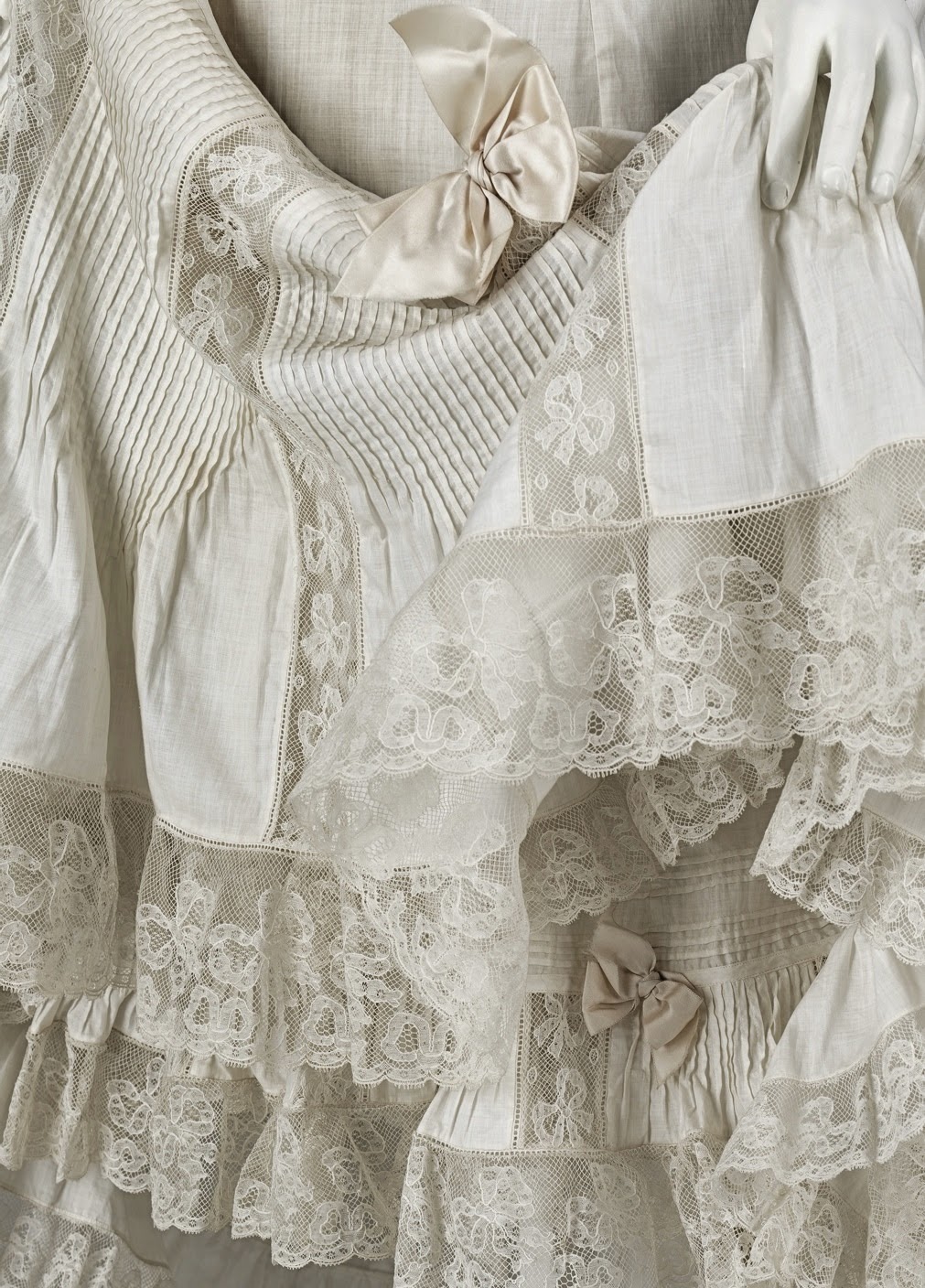I routinely come across detail images that inspire me, and make me sit back in wonder at the fantastical levels of achievement we have reached with regard to clothing construction and decoration. Here are several images with accompanying description that all leave me scratching my head and wondering, "how the hell?"
Rembrandt painted the "Portrait of a Woman" in 1639. The pleats on her skirt are perfectly aligned. The very fine lace trimming her elaborate bertha and cuffs is perfectly attached to the sheer linen fabric. Even the brocade ribbon rosettes trimming the front of her skirt are perfectly placed and uniformly made. When I see something of this nature all I can think of is, everything I'm seeing was made by hand, no machines at all. The fabric the lace, the trim, all made by hand, and the dress, stitched every centimeter by hand. We forget that in this hurried age.
Coco Chanel had this fabric commissioned for a coat she designed. What you are looking at is not pieced together, it was woven this way with the black transitioning into the Japanese inspired flowers and transitioning again into the pale creme. Sometimes a detail isn't about things being manipulated after being made, but their very nature is extraordinary, and so requires a design simple enough to allow it to speak on its own.
This Alexander McQueen bustier top still leaves me slack jawed every time I see it. The juxtaposition of the rigid, sharp, up-jutting collar and the fragility of the embroideries is amazing. The workmanship is perfect in every detail. The arcing shape over the hips is flawlessly done. And the unexpected nature of the choice of lilac with such a strong shape, wonderful.
H&W company did this lingerie style wedding dress for a summer wedding in 1903. Miles, it seems, of hand worked pin tucks. All of the fine bow knot machine lace is joined together to the dress with tiny rows of faggoting stitch work. And all of this work done on the finest cotton mull. The entire dress would have weighed next to nothing. Working with fabric this fine requires extreme levels of skill to do with effectiveness. This piece is ah-may-zing.
In 1730 Louis Caravaque did a portrait of Empress Anna of Russia. This is a detail of that painting. We're looking at the center front of the skirt, which is not trimmed with lace as it first seems. The lower half is in fact a fine netting that has been appliqued with an elaborate scroll pattern in cloth of gold. Mounting something with the rigid quality of cloth of gold onto something so fine is a master stroke of workmanship. The netting has been further defined with embroidered scrolls and arcs in gold thread. its a shame this garment no longer exists, it must have been truly dazzling to behold.
This is a part of a contemporary steam punk costume. I'm including it because, unlike so much costume work these days, this shows a very high level, both of skill, and of taste. The subtle choice of colors allows the garment's complex structure to sing out, and the drapery is very well executed, avoiding looking like a pile of jumbled laundry, which is all too easy.
A Worth wedding dress from the 1880s. Lets see here. double smocking on the center front of the bodice. Sleeves of silk brocade with white organdy under sleeves peeking out between brandenbergs of beadwork. The pleated and gathered silk that goes up and around the neckline is not only perfectly box pleated before the gathering, but also increases, not only in width but in the spacing of the pleating. This is dazzling work.
This portrait from 1569 is another one of those things that makes me gasp thinking of how many hours and how much skill were required to do it all. The shirt appears to be a brocade, but its far more likely that that repeating pattern of flowers was all embroidery done by hand. The gold lace edges of the ruff and cuffs, was probably worked in fine gold wire, a special skill set within the lace making trade. And the brocade ribbon would have been woven by hand, requiring all by itself, weeks of time.
And as a final entry this time, another Worth effort. His house worked with the embroidery firm of Michonet most often, and considering the style and execution of this, its likely that is who designed and created this. The work is done with ribbon silk wrapped metal strip, bugle beads, cultured pearls, glass beads and gold cord. The work, most of it is done on fine mesh which has been applied insertion fashion to the dress fabric. Amazingly detailed work, and all hand done.
There will be more posts of this sort at other times, when I get a good enough sampling of things to share. Part of what makes all these sorts of images work for me is how much they say about the incredible range of expression possible to us with Attire.









As you say, "ah-may-zing"! : )
ReplyDeleteIn the first detail, am equally amazed at Rermbrandt's skill in rendering that lace and fabric. A-may-zing all around.
ReplyDelete